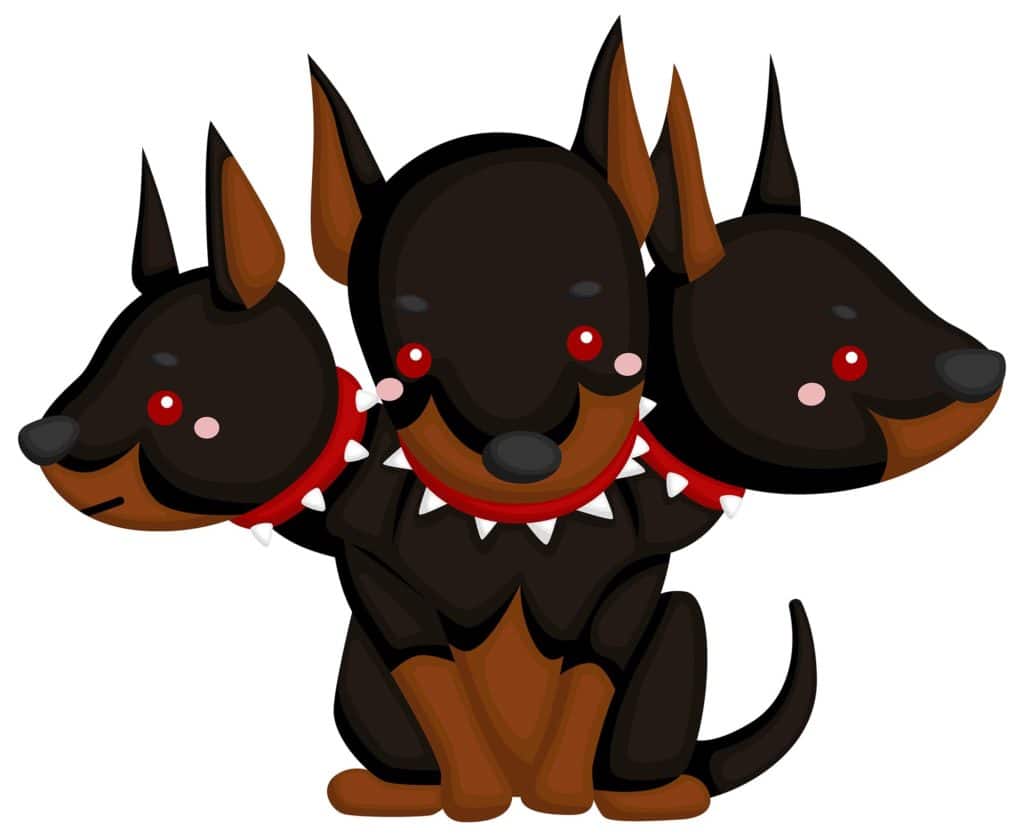For a dog, aggression isn’t ‘meanness’, it’s part of the way they communicate. Sometimes that’s related to fear, even if, in our eyes, they’ve got no reason to be afraid. If they’re frightened of other dogs or strangers, they want them to go away. If they see a threat to their ‘stuff’ – their food, toys, their home, even their owner, they want to defend them.
We may not know why they’re fearful. (We can’t get the dog on the psychiatrist’s couch and analyze him.) But the good news is, actually, we don’t need to know. We can go from where we are and start taking positive steps to change the dog’s view of the world and his behavior.
My job is to help your dog learn that what he fears isn’t fearful at all. In fact, it predicts really good stuff, so he’s no reason to be aggressive.
Not all aggressive behavior is about fear. Sometimes, all that lunging and barking is about frustration. They want to get to that other dog or that person to say ‘hello’ but the leash or the fence gets in the way. This calls for a different approach. We want these dogs to learn that well-mannered behavior is what’s needed if they’re going to be able to say ‘hi’ or get to ‘people watch’ in the yard.
Neither is an instant fix. Fear-related aggression, particularly, takes time, patience and a head that’s cool under pressure. But that’s where I come in. I’ll give you techniques to manage your dog’s behavior safely while we’re making progress with training. And my approach is always positive.
Having an aggressive dog is no joke. But that doesn’t mean that training can’t be enjoyable. The more you and your dog feel relaxed and enjoy training, the easier the progress. That’s an important part of my job, too.

There are plenty of myths around dog training. They don’t help. They just serve to make good owners feel bad about their dogs. So let’s bust a few here:
*Aggressive dogs are trying to dominate
No they’re not. They may be afraid (concerned for themselves or stuff that’s important to them, like food or toys) and trying to get what’s frightening them to go away. Aggression is a strategy that works for them – usually, the frightening thing does indeed go away. So they repeat the behavior. Punishing the aggressive display just makes the dog more fearful. You suppress the signs, but not the fear. That can make the dog unpredictable. If backed into a corner, they may bite.
In other cases, the dog is just frustrated and that frustration tips over into growling, barking and lunging when they can’t get to the object of their frustration. (We all know what frustration can feel like).
Either way, they’re not trying to dominate their owner.
*Aggressive dogs are just badly trained
It ain’t necessarily so. Many fearful and aggressive dogs are extremely obedient until they’re put in a situation that makes them afraid. Owners who haven’t experienced this before may well struggle to deal with it. They’ll almost certainly have people telling them they should punish their dog or ‘show him who’s boss’. But that just makes the situation worse.
Dealing with fear and aggression is tricky. It calls for diligence, patience and impeccable timing. It’s not an easy skill to acquire without help.
*Once aggressive, always aggressive
Not so. Dogs can learn to overcome their fear or control their frustrations with kindness and patience. Once we’ve accomplished this, they can be happy, confident, loving companions. Obviously, it’s important to take things slowly and manage the risks to yourself, other people and other dogs. In some severe cases, you may need to continue to manage those risks throughout your dog’s life. But that doesn’t mean you can’t have a good life together. And the earlier we start on the road of modifying the behavior, the better.
*Some breeds are more aggressive than others
There isn’t evidence to support this. Some breeds have a bad reputation in the media without a doubt because a small minority of owners encourage and promote their dogs’ aggression. But that’s not a reputation the breed overall has earned or deserves. I work with all breeds of dog – none are more difficult to help than others.
.